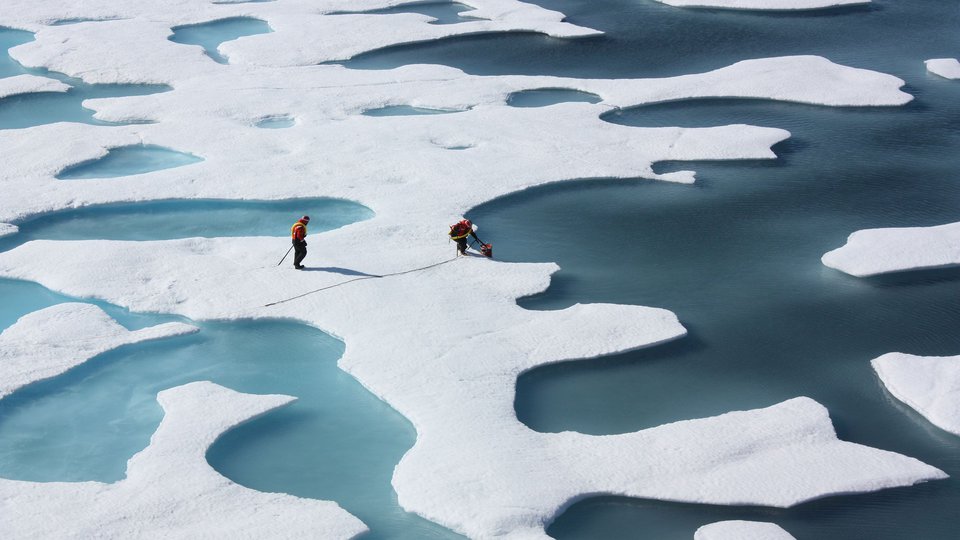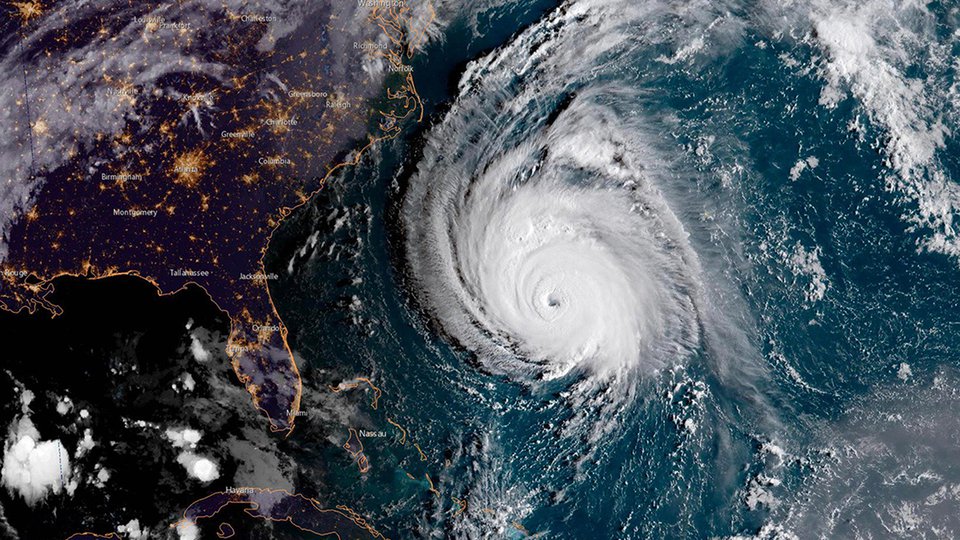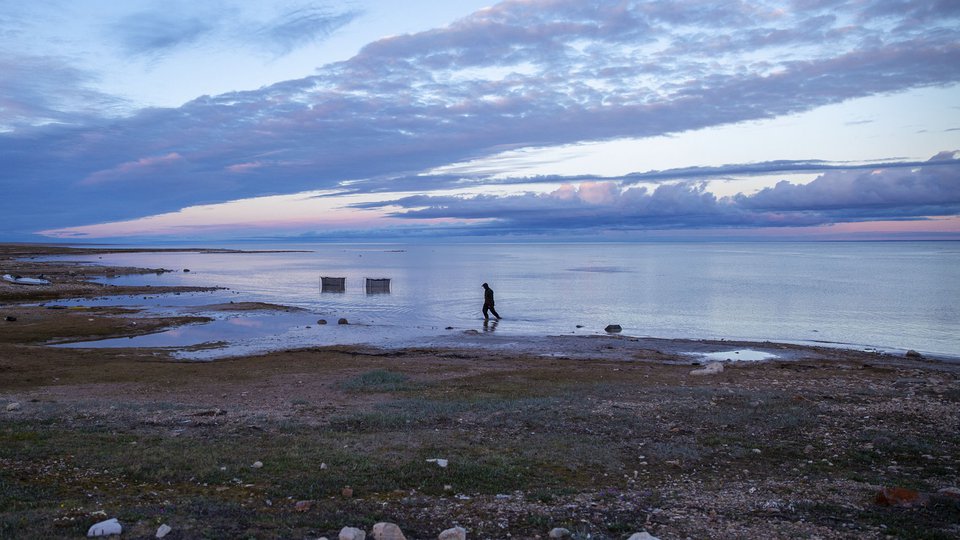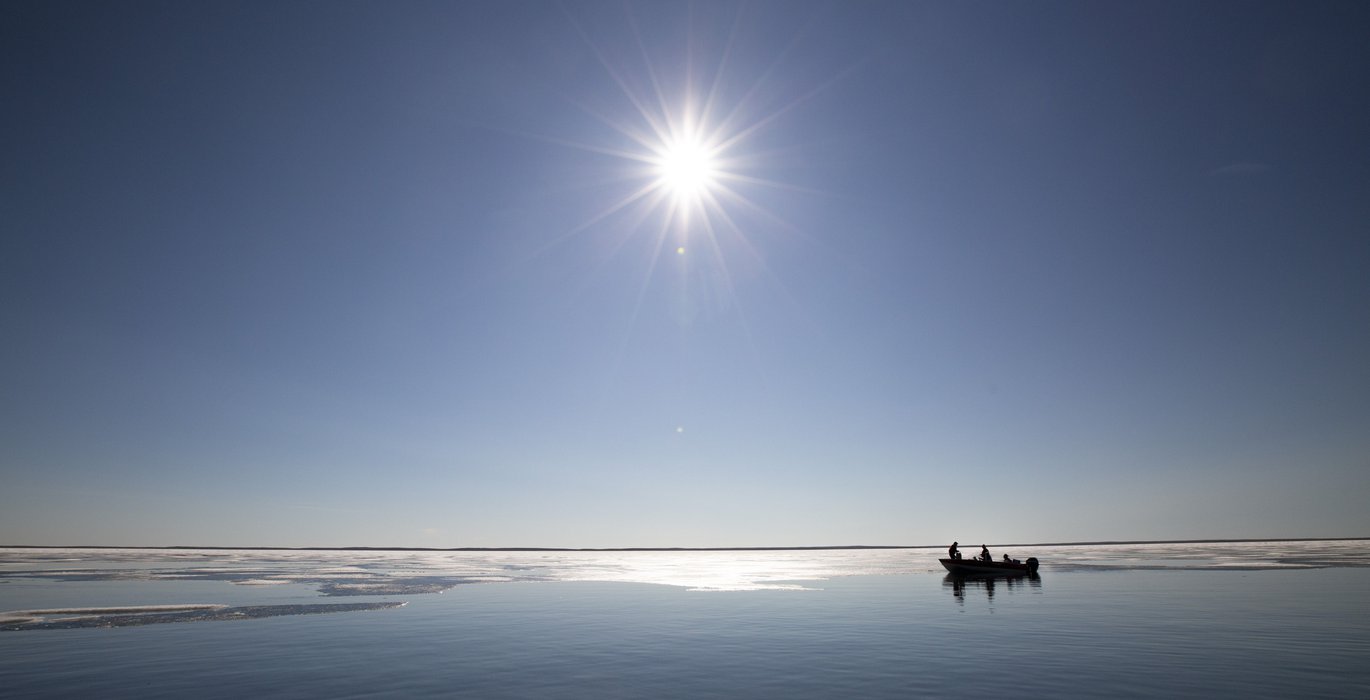
Helen Merrills, a communications advisor with Arctic Basecamp, recently sat down with Dr. Jeremy Wilkinson of the British Antarctic Survey to discuss his work in the Arctic and the changes he's seen there over the past twenty years. Dr Jeremy Wilkinson is an expert on sea ice dynamics, thermodynamics and mechanics, ocean wave propagation through sea ice, and deep-convection and water mass modification.
HM: What are your key messages about the Arctic that you think are most important, that delegates of Climate Week NYC need to hear?
JW: Well, I'd say first up and foremost is the Arctic's changing incredibly fast and we can see that through the satellite images that we've been taking over the last 20 odd years. Every day we take satellite images of the Arctic, so we can compare what the sea ice is doing one day to the next. If we stack those 20 years of images up, you can really see how much ice we've lost. The ice is minimum in September in the Arctic, that means it retreats to the smallest amount. If you just think about the time that I've been up there in the last 20 years when I started studying the ice in the Arctic in the summer, there was about 7.5 million square kilometers of sea ice in the summer. Now, we're down to about 4 million square kilometers. So we've lost about half in those 20 odd years. So those changes are real and they're happening now.
Many people think the Arctic is a very remote place from where we are today. But in fact the connections between Arctic change and the mid-latitudes are really strong and some of the changes that we see in California or in other areas, they can be linked to the changes in the Arctic. That's why you have to take these changes very seriously.
HM: Could you give us some examples of what impact an acceleration of sea ice melt in the Arctic could have elsewhere?
JW: Well, it's really tough to say one particular extreme event is linked to one particular change in the Arctic. So I think you got to take it as a whole. If you think about the Arctic as being on the top of the world like a white hat, that white hat has been getting smaller and smaller. Generally, the sea ice reflects that 70% of the sunlight that comes in. But as soon as you remove that white cap, what you’re left with is dark seawater that absorbs 70% of the solar radiation. So we have this extreme amplification in the Arctic where it's warming twice as fast as the rest of the planet. That warming is mainly due to the loss of sea ice we're having up there. And because you have a warmer Arctic, that means that it affects the weather patterns around the rest of the planet as well.
So therefore, we see extreme events that can be linked to change in the Arctic. We have warmer summers in Japan or in California as we had with the fires. All those things are what climate scientists are expecting to happen as the planet warms. These extreme events become much more common.
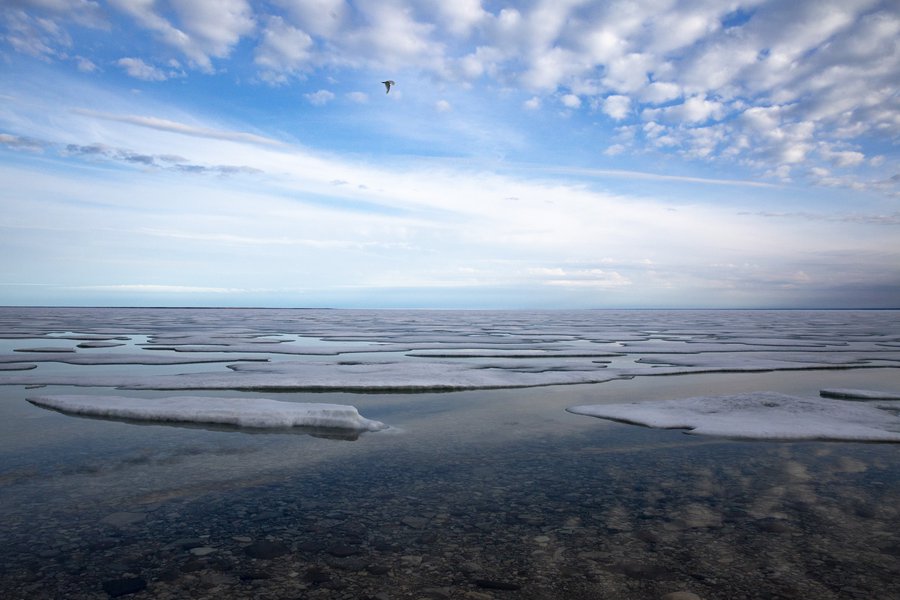
Summer sea ice near Cambridge Bay, Nunavut. Photo by Zachary Prong.
HM: What's one message from the Arctic that you would give to everybody at New York Climate Week?
JW: Well, I'd even make it broader than the Arctic. I think we have one planet not just one Arctic. We have one planet and we have to make the most of that planet and we can't go around destroying it. Therefore, we really need to understand the changes and change our livelihoods and how we look at the way we use resources and how we burn those resources and stick to the Paris Agreement. That's the best agreement we've got to reduce our emissions to a more controlled level.
HM: We talked about the fact that you've researched the sea ice levels for the last 20 years or so. Are you worried about what you might find after the summer that we've had up in the north?
JW: Yeah, I would say I'm worried every year. Because you visit the Arctic every year, you get to see those changes almost as you see a child growing up, you can see how things change one year to the next. Those changes are pretty extreme, even for us as scientists.
For example, one of the things that have happened over the last 10 years really is we're relying much more on robots and technology to take our measurements, because we're only there for such a short period of time. That's what we've been doing. But those robots need a very stable platform to make their measurements. They need quite thick sea ice. That's quite a challenge now to try and find that thick sea ice. Last year, we were up there with the Korean ice breaker Araon and their team. We actually had to take those robots back down with us because we couldn't find ice that was thick enough to deploy them. So that is a real art. So now, we're relying much more on remote sensing imagery and trying to understand where that thicker ice is and then really organize cruises to those regions rather than actually going to certain regions that might be more scientifically interesting.
HM: So essentially the changes in the Arctic are not just frightening but they're actually impeding you in doing the work that you need to do to find out why they're happening?
JW: It’s a real challenge but it's something that we have to confront as well. We have to make sure our technology now not just is able to stay on the ice, it actually needs to be able to float when the summer sea ice melts and then get frozen in to the next season. So again these technologies we're using have to adapt to the climate. So we're looking at systems that can actually float and then refreeze which is a challenge up north because the environment is so extreme.
HM: What’s one thing has surprised you most either about the region or about your research?
JW: Well, there's not just one thing. It's many, many things. First off, the speed of the changes. When I first studied the Arctic and the sea ice, we were trying to understand how sea ice works, what are the physics behind the formation and the amount of sea ice. Now, we're really removed from that. We're trying to take that further and understand what climate change is doing to the ice and how that affects the rest of the planet. So the science has moved on in that respect.
I think one of the positive things about Arctic research is how collaborative everyone is. Whether you're a Russian scientist, a Chinese scientist, Japanese, Korean, Canadian or British or German, everyone works really, really together and we all share our resources, because it is quite tricky to get up there and it's quite expensive. We're all very much focused on the job at hand and we all work together. So I think the message to take home is that science gets done irrespective of borders. We're all trying to understand the natural world and relate those facts to the rest of the people who want a list of those facts.
We have to stick to the Paris Agreement. The Paris Agreement really is the difference between having sea ice in the summer and not having sea ice in the summer.
HM: It's tough. It is. It's really tough to do that but we can. We can start to bring the emissions down. I think as we've been lucky enough to have a couple side events at the World Economic Forum in Davos that we can see that there's a thirst for knowledge by industry about the changes that are occurring. But also those industries want to change. They're trying to look at how they reduce their footprint. Last year we had Evian there looking at how to make all their bottles recyclable and Budweiser was looking at making their breweries all run on renewable energy. I think there is a groundswell in the industry about trying to reduce their CO2 footprint. But again, it needs to be driven by facts and we need to push those industries to take it further. So I think we all have our responsibility to support the industries that are actually looking towards a low carbon economy.
JW: I think the main point with the changes that are in the Arctic is that they're changing so fast. If you look at the latest computer models about where the sea ice is going, it's that the Arctic will be ice free in the next couple decades, if not earlier, and that's a pretty scary thought. If you're a man on the moon looking at the Earth you would have seen that the Earth was white at the top and now it's going to be very dark. Therefore, you think, "Wow, those changes are extreme," and those extreme changes mean extreme weather events as well that go hand in hand together.
So we have to stick to the Paris Agreement. The Paris Agreement really is the difference between having sea ice in the summer and not having sea ice in the summer. We have to make sure that we keep the politician's feet to the fire to ensure they reduce our CO2 emissions. Each country has the ability to reduce their emissions and politicians need to put the rules and laws in place to make sure we have a low carbon economy.
HM: So moving forwards what would be the next step? I mean this is a bit of a speculative question. If we can stick to Paris, how ambitious can we be as an international population realistically on climate change? Can we ever go back to pre-industrial levels of CO2?
JW: It's tough. It is. It's really tough to do that but we can. We can start to bring the emissions down. I think as we've been lucky enough to have a couple side events at the World Economic Forum in Davos that we can see that there's a thirst for knowledge by industry about the changes that are occuring. But also those industries want to change. They're trying to look at how they reduce their footprint. Last year we had Evian there looking at how to make all their bottles recyclable and Budweiser was looking at making their breweries all run on renewable energy. I think there is a groundswell in the industry about trying to reduce their CO2 footprint. But again, it needs to be driven by facts and we need to push those industries to take it further. So I think we all have our responsibility to support the industries that are actually looking towards a low carbon economy.
